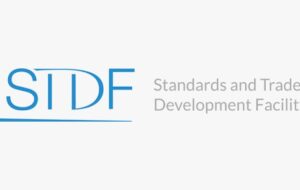Case study
STDF – Investment Prioritizations in Developing Countries
Challenge
Developing countries face demands to improve their sanitary and phytosanitary (SPS) capacity to enhance agri-food exports. However, limited resources require clear prioritization of investment decisions.
Actions
The STDF implemented a Multi-Criteria Decision Analysis (MCDA) approach using D-Sight’s software to prioritize SPS investments for market access.
Results
The SPS MAP framework has been used in several countries, improving the economic efficiency of investment decisions and securing funding for SPS capacity enhancement. More details can be found on the STDF website
The challenge
Developing countries are under pressure to enhance their sanitary and phytosanitary (SPS) capacity, which is crucial for boosting agri-food exports and meeting domestic policy objectives. However, resources from national budgets and international development partners are often insufficient to meet all these needs, making it essential to establish clear priorities. Furthermore, decisions on SPS investments are complex, involving technical, economic, and social considerations, such as trade impacts, economic growth, and poverty reduction. Information on these effects is often limited, adding to the challenge.
The actions
The STDF developed the SPS Market Access Prioritization (SPS MAP) framework to support countries in prioritizing SPS investments linked to market access. This framework aims to improve the economic efficiency of SPS investment decisions, enhance transparency, and foster public-private dialogue. By leveraging Multi-Criteria Decision Analysis (MCDA) through D-Sight’s software, the framework enables stakeholders to systematically evaluate and rank SPS investment options based on a variety of criteria, including cost and expected outcomes. The SPS MAP framework has been applied in around 10 countries, with some implementations facilitated by COMESA and the United States Department of Agriculture (USDA). In Vietnam, for example, the framework was used to prioritize phytosanitary investments.
The results
Countries that have used the SPS MAP framework have seen significant improvements in the economic efficiency of their SPS investment decisions. The framework has promoted transparency in decision-making and encouraged dialogue between public and private sectors. In some cases, its use has helped secure funding to enhance SPS capacity. In Belize, the successful application of the framework for prioritizing SPS investments led to its broader use in prioritizing agricultural investments and informing strategic planning processes. More information about the SPS MAP framework can be found on the STDF website.

Client’s details:
Client: Standards and Trade Development Facility
URL: http://www.standardsfacility.org
“The SPS MAP framework, supported by D-Sight’s software, allowed us to transparently prioritize SPS investments, securing much-needed funding and fostering collaboration between public and private sectors.”
Get Started Today
Ready to revolutionize your decision-making? Start your free trial now or contact us for a personalized demo.